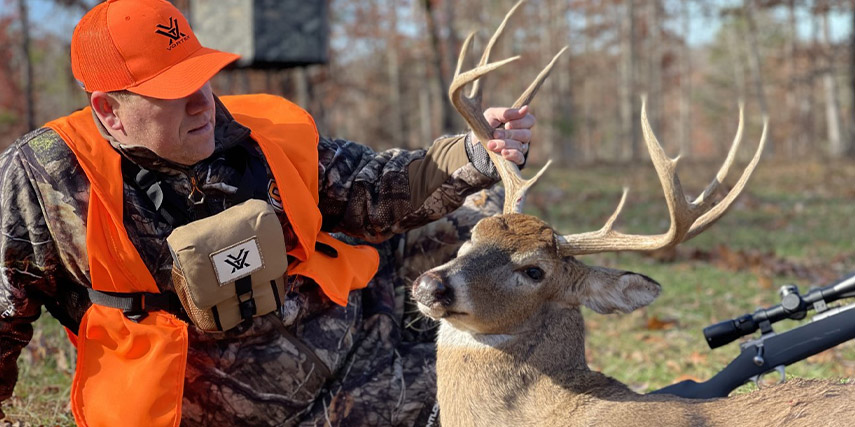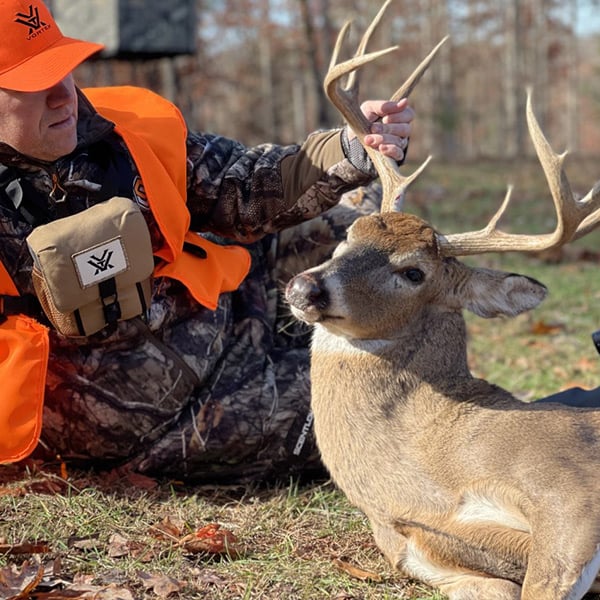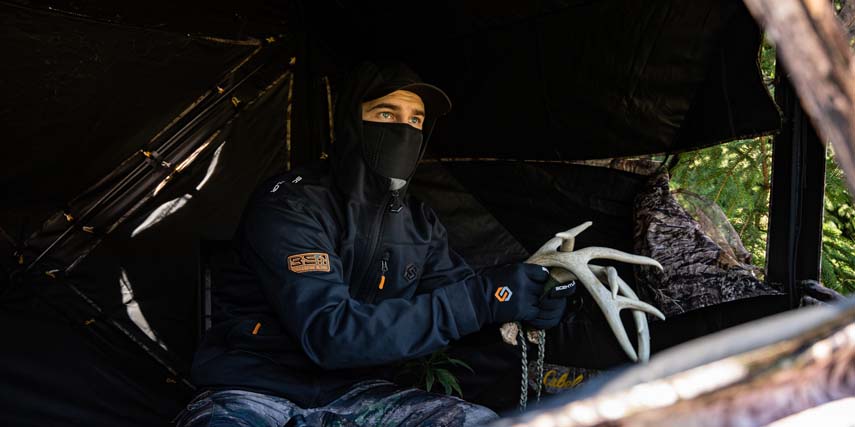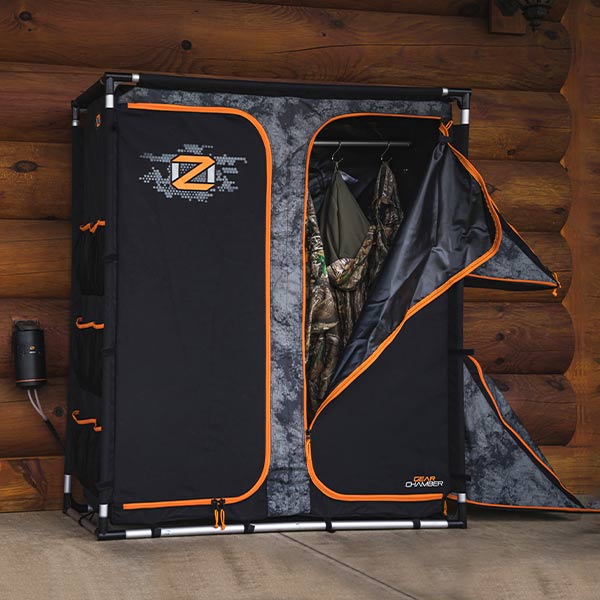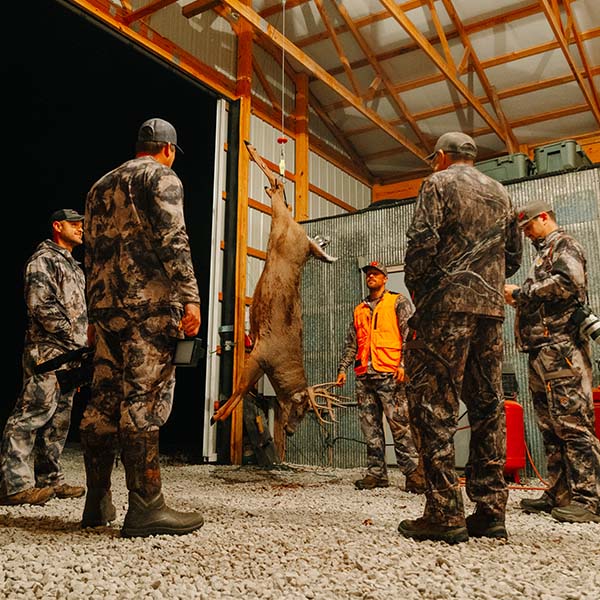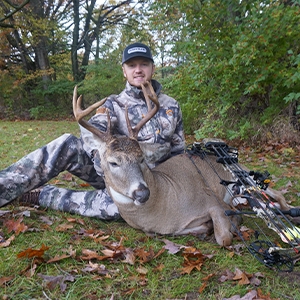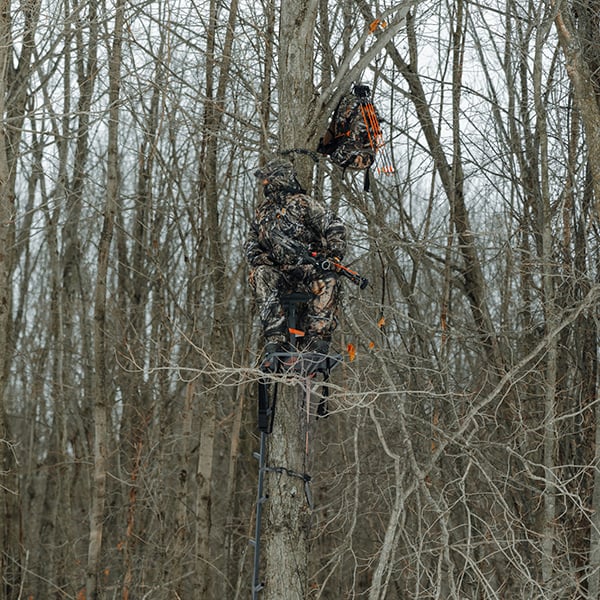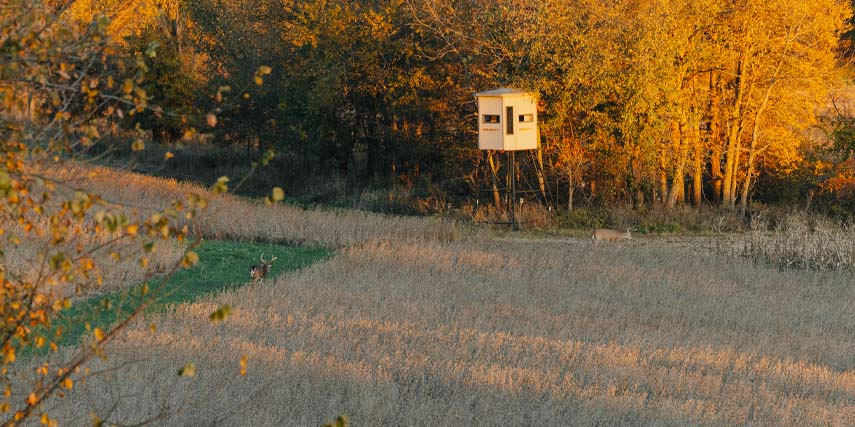
Having multiple stands or blinds on a property has many benefits for hunters. Wind direction, deer movement, and time of year play a significant part when choosing which site to hunt each time. Even with the pros of having multiple places to hunt outweighing the cons, I have one con that I struggle with each season.
When it comes to picking a stand or blind site and sticking with that specific one, I am one of the world’s worst. After sitting for an extended amount of time with no deer in sight, my mind begins to wander, and I find myself curious about what activity could be taking place at my other sites. Bucks are well known for traveling out of their comfort zone while pursuing a doe for breeding during the whitetail rut. Often, the rut is a time when bucks that have never been seen before magically appear. The uncertainty of where they will be located or what may randomly appear triggers even more panic for hunters when choosing a hunting spot.
The popularity of hunting from elevated blinds has dramatically increased in recent years. Hunters are finding a better success rate by using a stationary blind to spend most of their hunts. Could this trend be only that - A trend? Or could a box blind be the simple answer to many hunters' worries about where they should hunt? Is a box blind the best place to hunt during the rut? Below are three reasons why the answer to these questions may be yes!
Concealment And Human Scent
An elevated blind with maneuverable windows works great for keeping the hunter concealed. When inside the blind, the hunter can wear ScentLok’s new BE:1 Blackout series of black clothing to stay concealed visually and from a deer’s nose. The BE:1 series features carbon alloy technology that adsorbs unwanted odors, and the black-colored exterior keeps the hunter concealed while hunting inside the blind.
A blind with windows that close can also be very effective against human odor. When hunting in an elevated blind, the human scent is carried through the air much higher, keeping deer from catching any sign of the hunter. Add closed windows to this scenario, and even less human odor can escape.
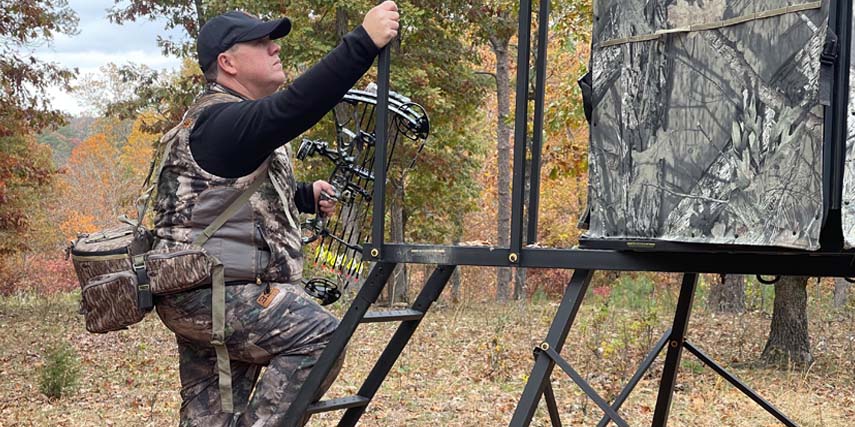
Better Vantage Point
When bucks are on the move while chasing does, the hunt must occur in an area where the hunter can view a large area. When bucks are in a rut, there is no prediction of where they will be next. Thus, it is the reason for hunting from a vantage point of farther distances.
An elevated blind is perfect for giving the hunter an advantage thanks to a superior view. Typically, most blinds are ten to fifteen feet in the air, giving hunters an aerial view of their surroundings. In my home state of Missouri, the rut typically falls close to the annual firearms season in early November. Hunting an elevated blind during the firearms season is ideal due to the ability to shoot longer distances and see farther. Many times, mature bucks have been harvested from a hundred to two hundred yards away during that period.
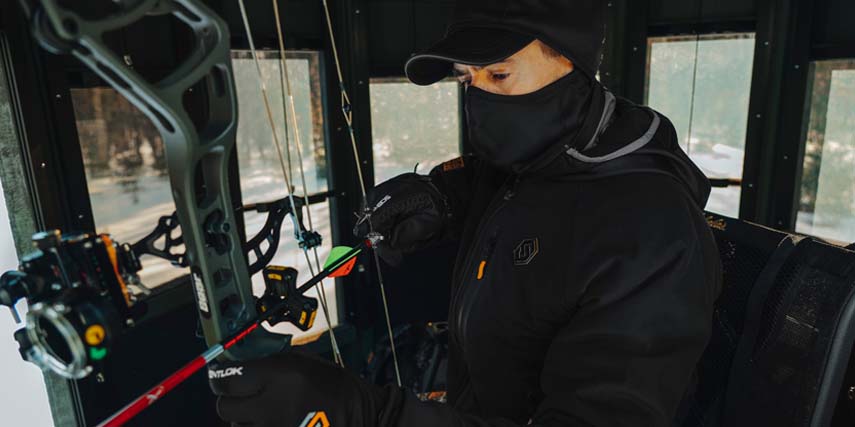
More Comfortable Sits While Hunting Longer Periods
Continuing with unpredictable rutting bucks, hunters need to hunt all day during this time. The uncertainty of when the next buck will travel through while pursuing a doe is enough of an incentive that the hunter should try to stay in the blind or stand all day. When hunting in a box blind or elevated blind, the hunter can have a more comfortable seat and stay out of the elements, such as the wind and cold. Plus, being concealed in a scent-free area allows for the simple pleasure of drinking hot coffee or cocoa and enjoying lunch or an array of snacks that helps pass the time and creates a more comfortable atmosphere to persuade the hunter to stay in the blind for extended periods.
During the rut, it is not uncommon for bucks to be harvested mid-morning or late in the afternoon when deer would typically be bedded, and hunters would be home on the couch. The rut means no rest for the bucks or the hunters. The hunter should be in the blind to score on a big mature buck at every opportunity.
